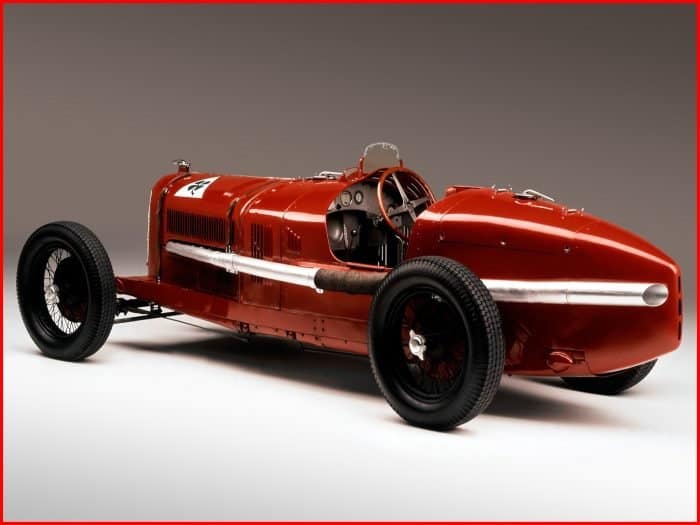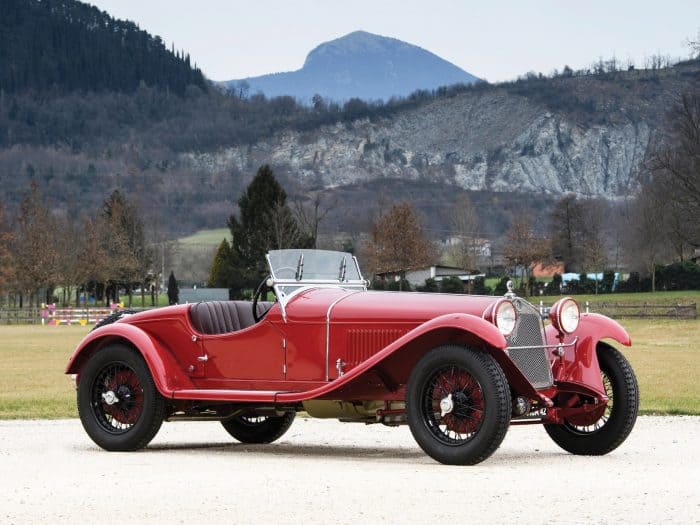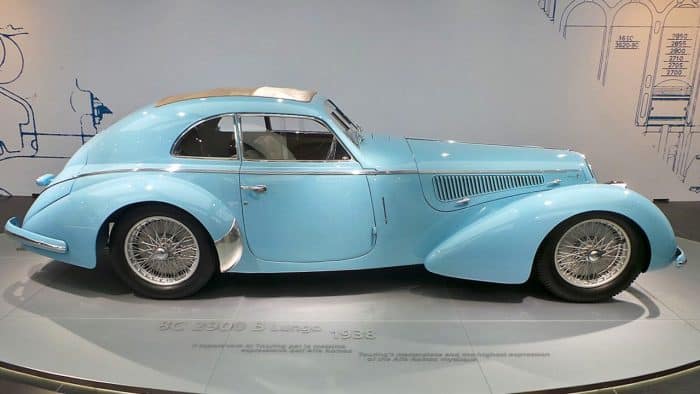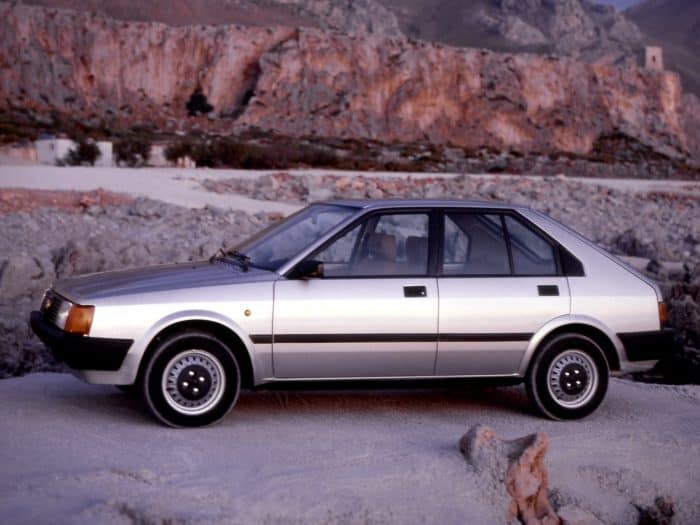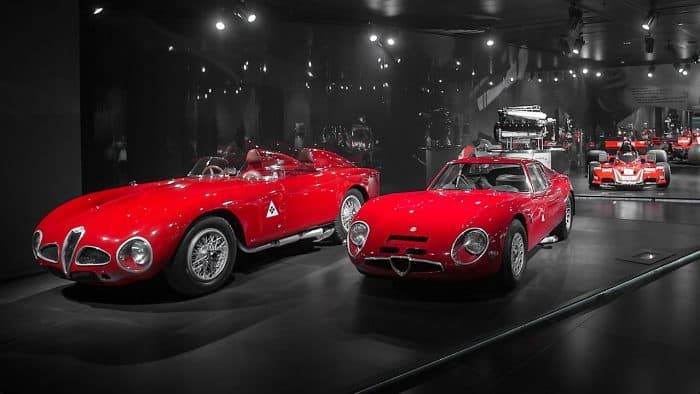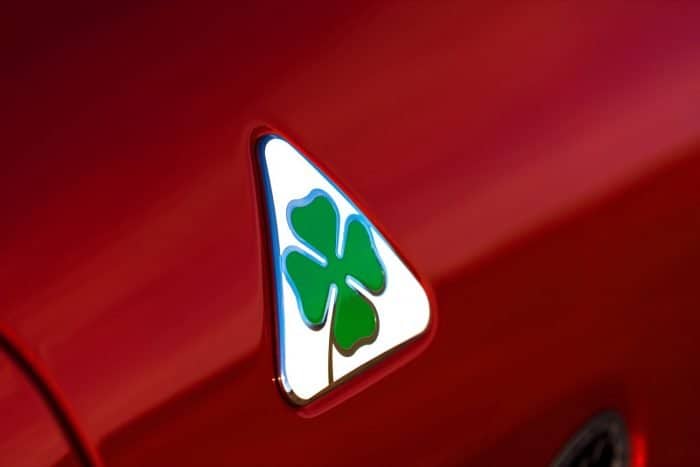Founded in 1910, Alfa Romeo is an Italian luxury sports car manufacturer synonymous with engineering prowess, well-handling vehicles, beautiful and provocative styling, and unfortunately, unreliability.
The company was owned by the Italian government for a few decades but now finds itself under the Fiat-Chrysler umbrella. After a controversial past with selling vehicles on U.S. soil, the company has since returned to high-volume U.S. production and is quickly becoming one of the most recognizable up-and-coming brands of the 21st century.
Alfa Romeo competes with Lotus, Mercedes, BMW, Cadillac, Lexus, and other luxury brands in the modern marketplace.
A History of Alfa Romeo
The story of Alfa Romeo begins in 1906 with French investor, engineer, and automobile manufacturer Alexandre Darracq. Darracq and a group of Italian investors planned to build an automobile factory in Naples but instead, decided to build the factory in Milan as there was more opportunity there. The company was founded as Società Anonima Italiana Darracq (SAID), and its factory was located at number 95 Strada Al Portello.
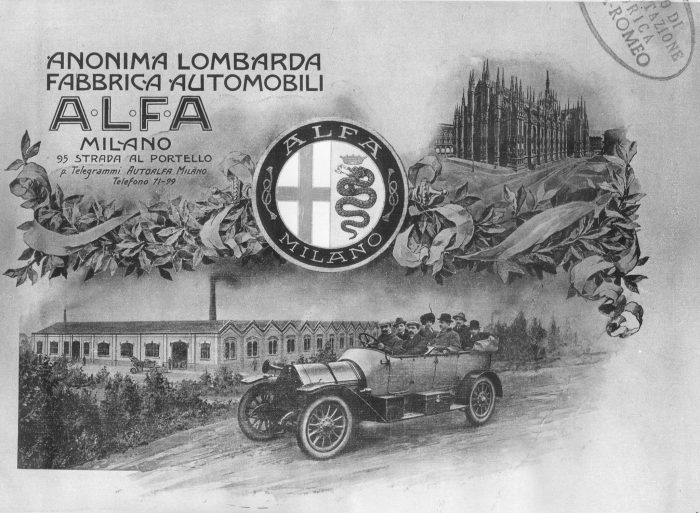
In 1909, one of the original investors, Ugo Stella, became chairman of SAID, and during an economic slowdown when Darracq cars were not selling well, Stella and other investors still in partnership with Darracq decided to found a new company. Thus, Alfa Romeo was officially founded on June 24, 1910 as A.L.F.A. ((Societá) Anonima Lombarda Fabbrica Automobili, interpreted as Lombard Automobile Factory, Public Company) in Milan, Italy. The SAID factory was repurposed and relaunched as A.L.F.A.’s factory.
In 1910 A.L.F.A. produced its first car, the 24 HP, thanks to Italian automotive engineer Giuseppe Merosi who was hired in 1909 to design cars specifically for the Italian market. In true Italian fashion, the 24 HP was almost immediately stripped of a few hundred pounds, beefed up by almost double the original horsepower, and aimed directly at the nearest racing event, which happened to be the Targa Florio, an open road endurance race in the foothills of Sicily.
A.L.F.A. would continue to develop cars over the next few years before production was halted in 1915 due to the onset of World War 1. In August of the same year, the company would come under the direction of Neapolitan entrepreneur Nicola Romeo, who saw A.L.F.A.’s factory repurposed to produce munitions, airplane engines, compressors, and engines based off of A.L.F.A.’s existing technology.
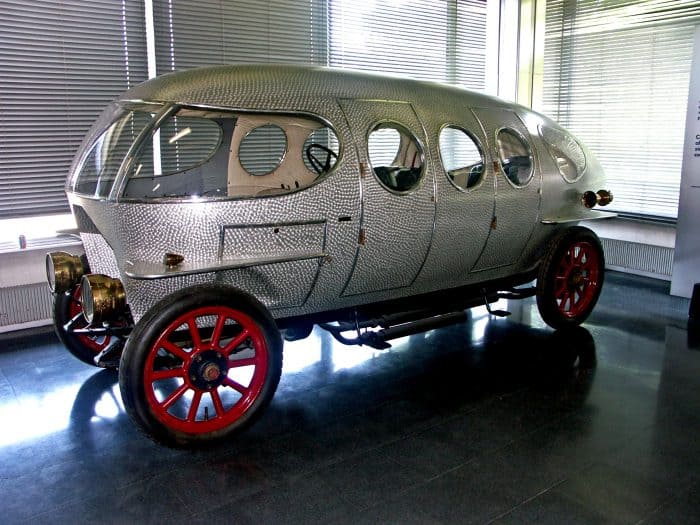
After the war ended in 1919, Romeo did not initially consider restarting A.L.F.A. as a car company, but thanks to enough parts to assemble 105 cars sitting around the factory since 1915, A.L.F.A. was back in business. In 1920, the company’s name was changed to reflect the new ownership, and Alfa Romeo launched the Torpedo 20-30 HP.
Throughout the 20’s Alfa would continue to pursue racing glory with a solid set of drivers, including one Enzo Ferrari, who would go on to create the Scuderia Ferrari racing team in 1929. Back in 1923, however, Alfa Romeo was still very much focused on the world of racing and gaining fame in the arena of the Grand Prix.
Enzo Ferrari, aside from being a talented racing driver, also had a relationship with one of Fiat’s racing drivers – Luigi Bazzi – who he swayed over to the Alfa racing team after a bad experience at Fiat.
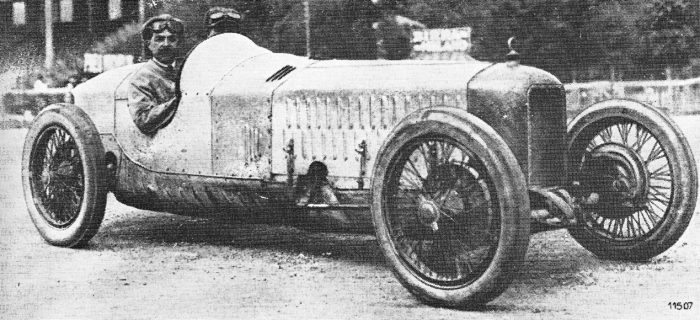
At this time, Alfa Romeo had just developed the P1 racing car which did not meet company standards and performed very poorly on the track. Luckily, Bazzi was still in contact with Fiat’s head of racing development, Vittorio Jano, who also jumped ship over to Alfa in 1923 to replace Alfa’s Giuseppe Merosi as chief designer.
The first car that Jano designed, the P2, was a smashing success and saw a win in its inaugural racing series – the world championship of racing for Grand Prix cars – in 1925. Jano went on to develop 4-, 6-, and 8-cylinder variants of this racing engine which were both reliable and powerful.
The Alfa Romeo 6C 1500 was based around a 6-cylinder version of the P2 engine which produced between 60-84 hp. The company wouldn’t particularly focus on production cars until the 1930’s and continued to be all but infatuated with the racing circuits. It was around the late ’20s, however, that Alfa began to seriously consider mass-production, as the world stage of motor racing was bringing them quite a bit of notoriety.
In 1929, Enzo Ferrari started Scuderia Ferrari, which handled all of Alfa’s racing affairs from that point on. Transitioning from the role of driver to team manager, Ferrari oversaw Alfa’s drivers and racing efforts.
The same year, the Alfa Romeo 6C 1750 was introduced, followed in 1931 by perhaps the most important Alfa car of all time: the Alfa Romeo 8C 2300. This car would go on to win Le Mans from 1931-34, four times in a row.
During this time, the P3 was also developed and was almost offensively successful. This was a period of total and utter domination on the racing circuits for Alfa Romeo. Much to the surprise of every onlooker, however, the company actually scaled back their racing entries even going so far as to lock all of the cars away in the factory for a year. The reasoning behind this decision was that the company was spending too much money trying to win races and wasn’t producing enough factory cars to keep up with the money they were sinking into Grand Prix technology, not to mention the global setback caused by the Wall Street Crash of 1929.
In 1933, Nicolo Romeo left the company which had to be saved by Italy’s Institute for Industrial Reconstruction (IRI). Ugo Gobbato now stood in place of Romeo as head of the company. Now under the control of Benito Mussolini, the Italian government was interested in the spotlight Alfa had attracted in the racing circuits and opened the company back up to racing developments the following year.
During this time, Tazio Nuvolari was Alfa’s most notorious racing driver, securing wins and fame for the company in the years leading up to World War II, including the Vanderbilt Cup on American soil.
In 1937, Alfa Romeo produced the 8C 2900, which was not only a hero on the track but an icon on the streets, too. It was shortly after this, however, that Alfa began manufacturing engines for the German military and in 1940, officially joined the Axis war effort.
It was during this seemingly lost period in Alfa Romeo history that Alfa produced some of the most powerful aero engines of the war and in fact, 80 percent of the company’s output was directly related to military activities.
This actually spurred radical growth in the company and called for the construction of a new factory in Naples, as the company grew from 1,000 workers to 14,000 over the course of seven years. Unfortunately, when the Italians went from merely producing equipment for the war to actively participating in it, Alfa’s factories became the targets of many bombing raids, which took the company’s operation offline permanently at Portello.
Alfa-engined planes did manage to set and beat 13 records for speed, altitude, and distance during this time. After the war was over, Alfa was without a factory or a leader, as Ugo Gobbato was shot and killed on his way to work in 1945 after a false accusation of conspiracy with German and Italian fascists.
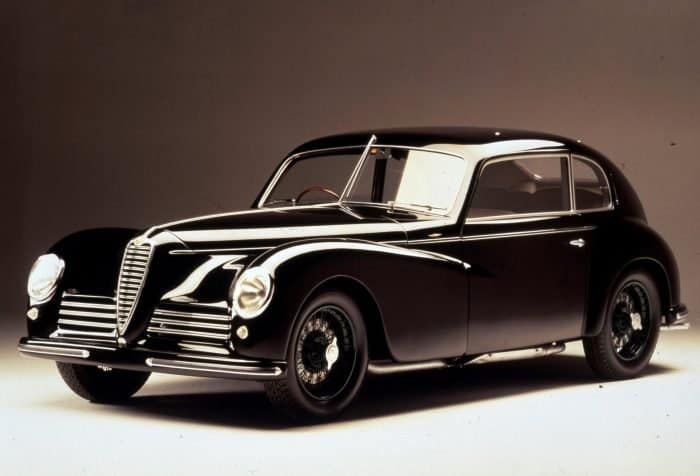
Chairman Pasquale Gallo was appointed to demilitarize Alfa while Orazio Satta Puliga was appointed Head of Design to help get the company back on its feet. While the brand survived for a few years producing electric cookers and airplane and marine engines, Alfa did turn out some pre-war 6C units to help return to profitability.
The true turn in fortune came in 1947 with the Freccia d’Oro and again in 1949 with the Villa d’Este. Both cars were flawlessly beautiful, highly prized, and very much responsible for putting Alfa Romeo back on the map. After the 1900 was introduced in 1950 to huge success, Alfa found its way back to the racetrack and reclaimed its previous successes in multiple Grands Prix.
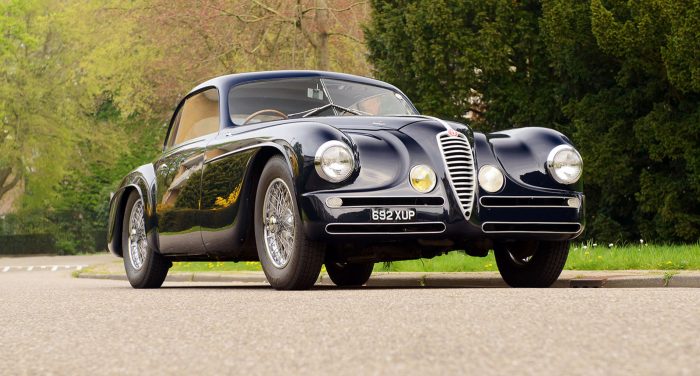
The Alfetta 158 was the most iconic car of this period; salvaged from pre-war parts, the 158 secured the world championship for Alfa in 1950. Alfa’s engineers made some improvements to the 158 and produced the Alfetta 159 in its place, which featured the most powerful 1500 cc engine ever built.
After the 425 hp 159 brought Alfa the second Formula 1 series championship in 1951, Alfa withdrew from Grand Prix racing while still maintaining some presence in the racing world. It was in 1954, however, that Alfa Romeo’s history would change forever with the introduction of the Giulietta.
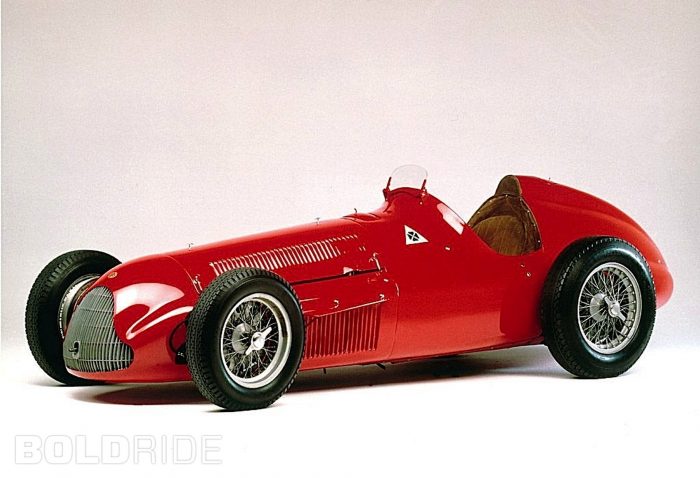
The Giulietta saw no fewer than six versions but was originally released as a two-door Sprint coupé. The Giulietta was quick, efficient, nimble, and beautiful; it was the quintessential Italian car and sold just under 28,000 units in the first year. The success of the Giulietta allowed Alfa to expand its overseas presence with US importers requesting more cars than ever before.
In 1958, Alfa produced the 2000 sedan, and towards the end of the decade also produced the Matta, which was a Jeep-inspired design, and the Romeo, which was very reminiscent of the Volkswagen Type 2.
In 1961 Alfa celebrated 100,001 Giuliettas produced and, the following year, the Giulia was released as well. The Giulia was designed with the use of wind tunnel technology and boasted a 0.34 drag coefficient – one of the lowest of its time. The Alfa 2600 also came out this year and was the first model to sport disc brakes.
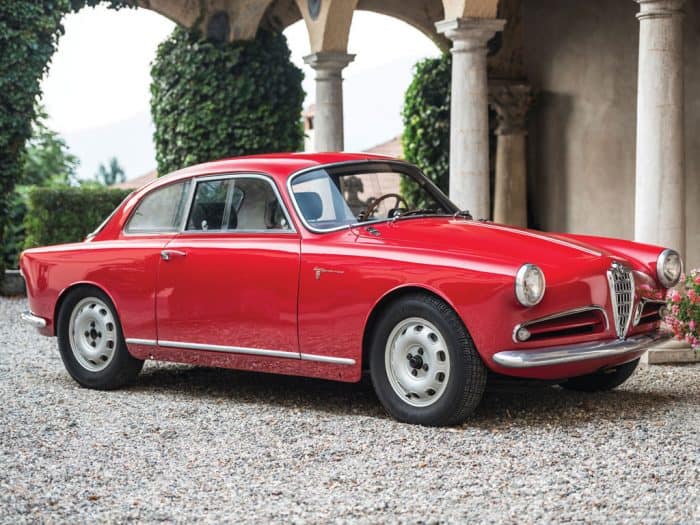
In 1963 Alfa partnered with Carlo Chiti to create the Autodelta racing division which reintroduced Alfa cars to the world of racing until 1984. Autodelta would go on to create 8 and 12-cylinder 3.0L boxer engines, marine engines for powerboat racing, and aircraft mills as well.
After the introduction of Autodelta, Alfa saw racing success with the Giulia GTA and Tipo 33. During this time, Alfa also required more space and production facilities, so the company founded a new 2.5 million-square-meter production plant at Arese and a test-track at Balocco. Alfa also began construction on a new site in the south of Italy at Pomigliano d’Arco in Naples in 1968 which would become Alfasud, or Alfa South.

The goal of this new factory was to help with unemployment rates in the south of Italy and the Alfasud, Alfa’s first FWD model, would be exclusively produced at this plant. While the car was not necessarily wildly successful, it did manage to move a moderate amount of units and gain somewhat of a cult following. Due to the peasant laborers used in the factory that were accustomed to a 3-day work week, the 5-day factory workweek seemed to disturb the status quo of the region and many say that this is why the ‘Sud was never commercially successful.
The 1970’s were a complicated and financially turbulent time for both Alfa and Italy as a whole. This did not, however, stop the Italians from competing in and winning numerous races and championships throughout the decade or from introducing several new models such as the Alfetta GTV and 2000 TD, Giulietta, and Alfa 6. Notably, the Alfetta 2000 TD was the first Italian car to feature a turbodiesel engine.
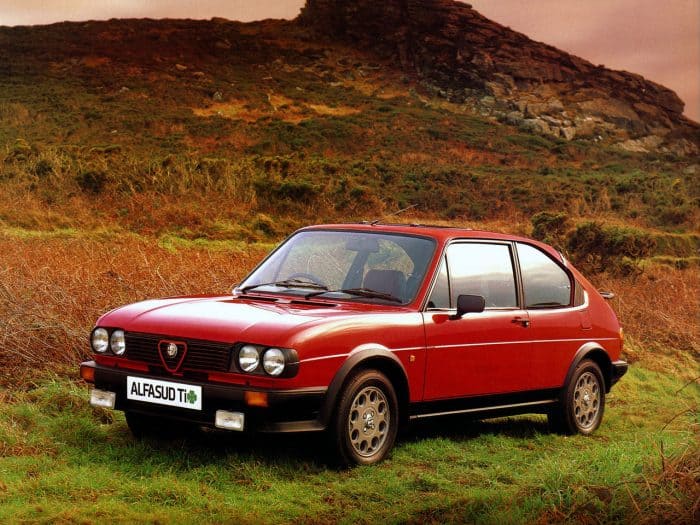
Thanks to the 33 TT 12, a wildly successful 12-cylinder boxer-engined racecar, and its successor, the 33 SC 12, Alfa saw a lot of success on the track. The ever-popular GTA also continued to find success after spawning a ‘Junior’ variant with a 1300cc engine.
In 1975, Alfa won its first World Sportscar Championship and the following year, returned to Formula 1 racing. In 1978, Nikki Lauda would drive Alfa’s ‘fan car’ to an incredible win, though this would be the car’s only outing as it was pushing respected regulations and was seen as somewhat of a cheap move by the other teams.
In 1981, the Alfetta received a V6 engine which essentially turned it into a supercar, making it that much more popular. In 1983, Alfa Romeo entered a joint venture with Nissan, forming Arna (Alfa Romeo Nissan Automobili). The Arna would be a short-lived stake that would ultimately come to a close in 1987.
In 1986, IRI, which had owned Alfa since 1932, put the company up for sale in a period of financial decline. While initially a joint venture with Fiat was proposed, Ford stepped in and made an offer on the company with a small stake and plans to up that stake and control as time went on. Fiat ended up buying the whole company and securing the Italian jobs in the process, which Ford was not in a position to do. Thus, Alfa merged with the Fiat group towards the end of the 1980s.
During this time, Alfa’s design center was moved to Milan where it would continue to work. The Alfa Romeo 164 was introduced in 1987 as a roomy and powerful top-tier sedan and was the first vehicle to be introduced after the company’s purchase by Fiat; the 164 turned out to be immensely popular stateside and commanded special U.S.-specific trims and packages as well.
The 1990s saw incredible success for Alfa both on and off the track. Thanks to the new 155 V6 Ti, Alfa secured a historic win at the 1993 DTM, or German Touring Car Championship, where driver Nicola Larini not only finished first but recorded 11 of the fastest laps in the race.
Towards the end of the 1990s, Alfa developed the revolutionary common rail injection system used in the 156 which essentially opened a whole new door to making cars for the company and won the prestigious car of the year award in 1998.
The 156 GTA finds success on the track in the early 2000s while the 147 is awarded Car of the Year in 2001 and the new 159, Brera, and Spider models all bring sales success for the company. In 2003, the Alfa 8C Competizione concept was unveiled and would go into a limited 500 unit production in 2007 (with an additional 500 Spider variants.)
From 2001 to 2012 Alfa Romeo saw a decline in sales from 213,638 to 101,000, but started reintroducing vehicles to North American shores in 2008 in an effort to combat this deficit. In 2015, the Alfa Romeo 4C served as a scaled-down counterpart to the 8C; instead of using a beefy 8-cylinder engine and churning out raw power, the 4C was more interested in lightweight agile performance and nimble handling.
After that came the all-new Giulia and, more importantly, Giulia Quadrifoglio in 2017. The Quad was powered by a 2.9L twin-turbo Ferrari-sourced 505-hp V6 and featured aggressive and unforgettable styling, and was an instant classic in the U.S. market. The following year in 2018, Alfa released the Stelvio crossover SUV as well as a Quadrifoglio variant featuring the same Ferrari engine and recorded the fastest SUV lap on the Nürburgring with it.
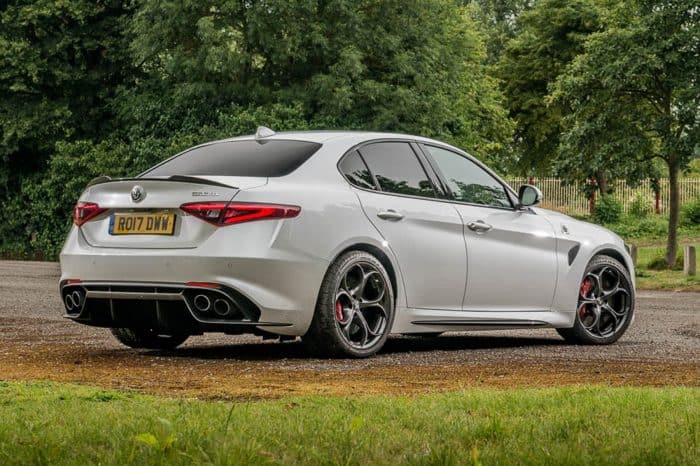
Alternative Propulsion and Hybrid Vehicles
Considering the fact that Alfa Romeo has been a race-bred competition-focused company for the vast majority of its existence, hybrid and green technologies aren’t exactly high on its list of priorities or interests. Alfa has certainly experimented with diesel technology and actually developed the first common-rail injection system in a diesel vehicle, but that’s basically where the train stops for Alfa.
In the last couple of years of the twenty-teens, however, Alfa did begin eyeing some interesting hybrid F1 technologies for use in their new Giulia Coupe. While not necessarily an eco-friendly technology or anything like a plug-in hybrid, the system would allow engineers to combine the power of a traditional internal combustion engine with the instant torque and power of an electric motor or two. These motors would work in concert with each other and use regenerative braking technology to recharge the battery pack while boosting performance for the car overall.
Going into the 2020s, the technology will likely find its way into many more vehicles both within the Alfa Romeo range and across the board of manufacturers as well.
Crash and Safety Ratings
Historically, Alfa Romeo has designed its cars with some of the best engineering in the industry. There seems to be a lot of fuss floating around about the cars being unreliable, but Alfa has actually taken a lot of steps to be one of the safest sports car manufacturers out there.
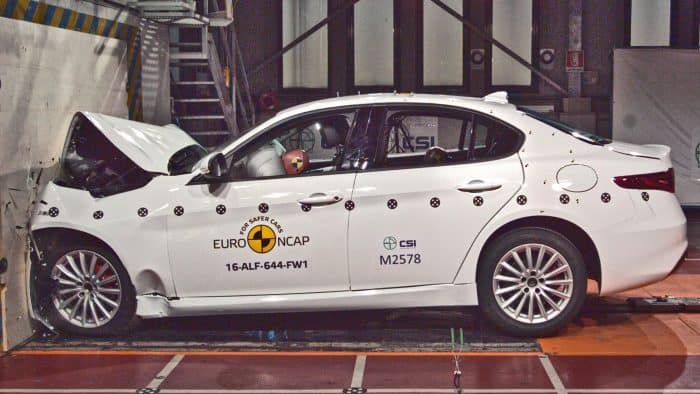
While the IIHS hasn’t exactly gotten a good variety of Alfa Romeo’s cars tested since modern safety expectations have risen, the 2017 Alfa Romeo Giulia did receive recognition as an IIHS Top Safety Pick+ while the 2018 model was also awarded a Top Safety Pick award.
Since the brand is still relatively new and does not consist of many vehicles, we likely won’t be seeing evidence of Alfa Romeo’s safety ratings and equipment before 2020, but as the lineup gets more diverse, testing institutes such as the IIHS will be more adamant about getting all of their ratings to the public.
Alfa Romeo Safety Equipment
Both the 2018 Alfa Romeo Stelvio and Giulia offer Forward Collision Warning-Plus with audible and visual alerts, but there’s more on offer in terms of safety. The 2018 Alfa Romeo frontrunners have access to Alfa’s full Driver Assistance Dynamic Package which offers Lane Departure Warning, Automatic High-Beam Headlamps, Adaptive Cruise Control with Full Stop, and an Infrared Windshield that helps block ultraviolet light and allegedly takes the edge off inside the cabin on hot days. The vehicles also benefit from the optional Blind Spot Monitoring System with wing mirror alerts.
Unsurprisingly, the Alfa Romeo 4C doesn’t necessarily benefit from any of this safety tech considering the fact the car was designed from the ground-up with weight savings, performance, and handling in mind. The advanced electronics and safety sensors required for this equipment would only hinder performance, so when you buy a 4C, you can be sure that you’re getting pure, unbridled performance.
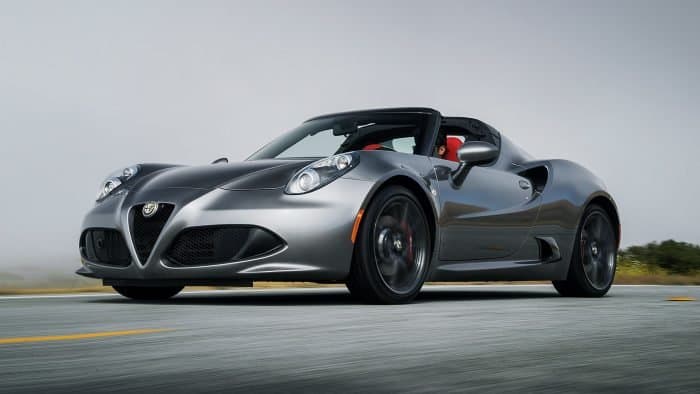
The only benefit from springing for the Quadrifoglio variants of the Stelvio and Giulia, aside from the Ferrari-sourced twin-turbo V6, seems to be a closer-to 50-50 weight distribution, carbon ceramic Brembo brakes, and an Integrated Braking System that pre-pressurizes the brake pedal and allows the car to stop quicker and harder, and reduces stopping distance.
Alfa Romeo Reliability and Recalls
While the Giulia has not seen any official recalls, the Stelvio has two recalls both regarding sealing issues. Water has been found leaking into the control modules and liftgate wiring connectors of mid-year 2018 Stelvios causing corrosion that could lead to potential issues. The control module issue may lead to malfunctioning indicators, windshield wipers, exterior lighting, or horn while the liftgate wiring connector corrosion might cause the liftgate to automatically open at speeds under 3 mph.
Outside of official recalls, the Giulia has certainly been subject to numerous complaints regarding electrical systems failures, strange quirks with the brakes and accelerator, and generally problem-inducing issues regarding electrical components even at highway speeds.
Alfa owners can find out if their vehicle has any active recalls here.
Consumer Satisfaction and Dependability
In truth, it’s a bit difficult to review the long-term reliability and satisfaction ratings for a brand that has, essentially, only been operating on U.S. soil for a few years (since the 4C, this has really been an entirely new brand and all past Alfa Romeo offerings really can’t even be classified as having come from the same company.) That said, the majority of reports from J.D. Power made by verified owners praise the brand for styling, performance, reliability, and drivability.
As far as ride comfort and handling are concerned, Alfa Romeo’s vehicles should check everyone’s expectations for a luxury brand. Most of Alfa’s lineup features a “dna” drive mode selector which essentially takes the car from either a very sophisticated and composed easygoing daily driver to a track-focused sports machine, or somewhere in the middle.
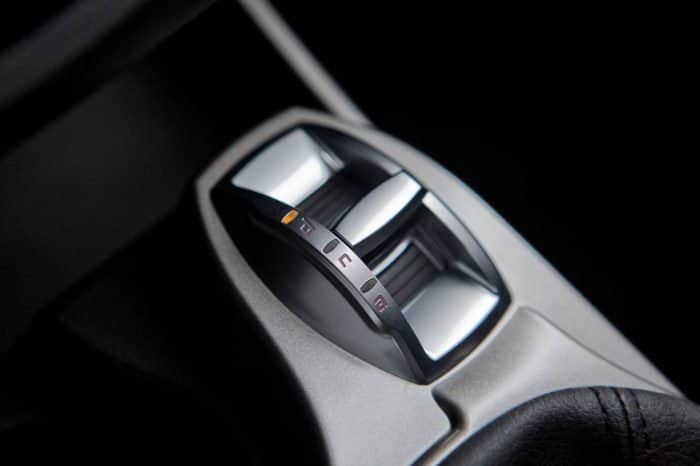
Most Alfas also get pretty decent gas mileage for how sport-focused they are thanks to the miracle of turbocharging. Even the Stelvio SUV is said to handle curves and bumps as competently as its Giulia stablemate.
While some of the earlier generations of these vehicles experience the occasional software glitch, it seems that most of the issues can easily be ironed out by a software update or equipment refresh. Interior and exterior stylings are noted to be not only approachable but also eye-catchingly beautiful and, in fact, most owner reviews mention at some point that the car is “a real head-turner.”
Some owners do note issues with difficulty figuring out exactly how to work their Alfa Romeo and report that the controls can be confusing and counter-intuitive or placed in non-traditional locations, sparking uncertainty. Nothing a good sweep through the owner’s manual couldn’t solve, we’re sure.
While it’s easy to say that the newer brand is wowing everyone and delivering top-of-the-line performance, we must note that as far as long-term reliability is concerned, Alfa Romeo is part of the Fiat-Chrysler conglomerate which, historically speaking, is one of the less reliable car manufacturers in existence.
In fact, Consumer Reports rates brands by reliability and Chrysler is ranked 17th with a score of 41/100, Jeep is ranked 20th with a score of 38, Dodge finds itself at #24 rated 32, while RAM comes in at #25 with a rating of 30. Given this information, it’s easy to see why people are skeptical of Alfa Romeo’s long-term reliability, as the brand has historically only been producing sports cars meant for a far lower amount of daily driving than the mass-production approach the company is pursuing through the Giulia and Stelvio.
Alfa Romeo Museum
The Museo Storico Alfa Romeo, or Alfa Romeo Historical Museum, opened its doors December 18, 1976, and is located in Milan, Italy in the former area of the Arese plant. The museum celebrates over 100 years of Alfa Romeo history including cars, aircraft engines, tractors, buses, railway locomotives and more.
The museum was closed for renovations in 2011 and reopened to the public in 2015 with the relaunch of the brand, unveiling the new Giulia and Alfa Romeo logo in the process. The museum collection totals over 250 vehicles and 150 engines, but only 69 are on display as of 2015. The remainder find solace in storage or are on-loan to auto shows and Concours events around the world.
Annual Sales
Alfa Romeo was a low-volume production company in 2014, 2015, and 2016, but with the introduction of the Giulia in 2017, we saw a sales spike from 528 units in 2016 to 12,031 in 2017. For 2018, Alfa Romeo is on track for 20,000+ units moved for the year, so right now the company is exhibiting a tremendous amount of growth in the sales department.
This is in no small part thanks to the newly-introduced Stelvio crossover SUV, which has yet to see its first full year of sales at the time of this writing. The Giulia is also very much rising in popularity in 2018 and is seeing more sales success than its inaugural year as well.
Business Operations
Alfa Romeo has been owned by Fiat since 1986 and in 2014, Fiat became the owner of Chrysler Group LLC after scooping up Maserati in 1993. Today, Fiat Chrysler Automobiles (FCA) encompasses Fiat, Alfa Romeo, Abarth, Lancia, Chrysler, Dodge, RAM, Jeep, Maserati, and even owned Ferrari before January 3, 2016.
Currently, FCA is actually looking at separating some of its more exotic offerings as it did with Ferrari in order for those companies to grow and perform better outside of the FCA bubble. Alfa Romeo and Maserati may be interlinked companies by the end of the decade with no real ties to FCA minus the fact the company would still be the majority shareholder.
Alfa Romeo Motorsport
A.L.F.A. started racing in 1911 and built its first purpose-built racing car in 1913. The Targa Florio would turn out to be Alfa’s proving grounds while also competing in various Grands Prix around Europe with notable drivers Giuseppe Campari, Antonio Ascari, Ugo Sivocci and Enzo Ferrari.
Alfa won the first ever Automobile World Championship in 1925 thanks to lead designer Vittorio Jano, who would design some of the most impressive racing machines of his time for Alfa Romeo. In the 1930s, the Alfa Romeo P3 would be wildly successful in Grand Prix racing, even going so far as to beat the Germans on their own turf at the 1935 German Grand Prix held at the Nürburgring.
The Alfa Romeo 8C 2500 won the Le Mans 24 Hours from 1931 – 1934. After the war, Alfa got involved in Formula 1 and won not only the first-ever but also the second-ever championship of the sport. After these wins, Alfa Romeo withdrew as a racing entity and merely supplied engines to teams for the next few decades.
Alfa Romeo was also successful in many other racing modalities such as Touring Car championships, Formula 3, Rally racing, and Sportscar racing. The brand has collected over 125 wins in its long and storied history of motor racing.
Logo and Alfa Romeo Cloverleaf Origin
The Alfa Romeo logo consists on one side of a red cross on a white field while the other half shows the image of a man being swallowed by a crowned snake. Simply enough, the red cross on the white field is the symbol of the city of Milan, the birthplace of the company. On the other side, things aren’t so cut and dry.
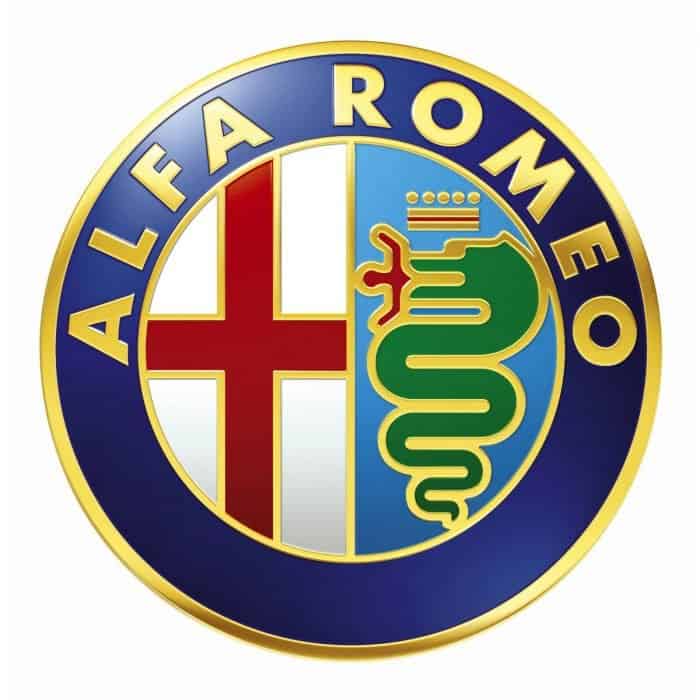
The snake side of Alfa Romeo’s logo is actually the crest of the Visconti family which ruled Milan from 1277 to 1447. According to Alfa, they see the man coming out of the snake rather than being consumed by it because this is meant to symbolize rebirth and transformation, or adaptivity. As a company that has been through two world wars, adaptability is most certainly an important characteristic.
As for the famous Alfa Romeo Quadrifoglio or four-leafed clover, that actually dates back to 1923 when Alfa Romeo factory driver Ugo Sivocci was fed up with never winning races and decided to add a four-leaf clover on a white diamond to the side of his racecar for the Targa Florio. Sivocci ended up being victorious and the clover became associated with him and his car.
Sadly, Sivocci died later that year while testing his P1 racecar which had not yet been painted with his quadrifoglio insignia. He was one of four Alfa Romeo factory drivers so it was decided that each corner of the emblem represented a driver and since his death, the emblem has changed to a three-pointed triangle to symbolize Sivocci’s loss. Ever since then, every Alfa Romeo racecar or performance vehicle has worn this Quadrifoglio emblem as a sign of good luck.
Alfa Romeo Marketing
In a surprisingly bold move, FCA allocated all three of its 2017 Superbowl ads to the Alfa Romeo brand. The company’s relaunch in the U.S. has supposedly run FCA upwards of $2.7 billion and Alfa Romeo has made good use of advertisements in trying to get the word out about the new company.
When the Giulia and Stelvio arrived on-scene, that’s when things really started picking up for the company. A common theme across most Alfa Romeo marketing is the theme of being surprised, allured, and even romantically interested in the design language of the brand. Commercials often use words such as love, seduce, artistic, beauty, luxury, passion, and desire to sell the idea of owning an Alfa Romeo using the sultry and seductive voice of a woman at a near-whisper.
The commercials are certainly memorable, but the outstanding press and reviews that the Alfa Romeo Giulia Quadrifoglio has received seems to have had an even greater effect on turning the public attention to the newly-sprouted performance brand.
Alfa Romeo Finance
Chrysler Capital typically handles financing offers and deals for the other brands that the conglomerate encompasses, but Alfa Romeo is nowhere to be found on Capital’s website. Alfa Romeo also does not appear to have its own financial services branch which essentially means that customers will have individual experiences at the dealership that may not be found at other dealerships.
Alfa Romeo Dealerships
Currently, Alfa Romeo products are sold at just under 200 dealerships nation-wide. Most of these dealerships, mind you, are actually Fiat dealerships with Maserati dealerships coming in after dedicated Alfa Romeo dealerships. Initially, Alfas were almost exclusively sold at Fiat dealers but now that the brand is a little more established, you can generally find a place selling Alfas in every major city in America.
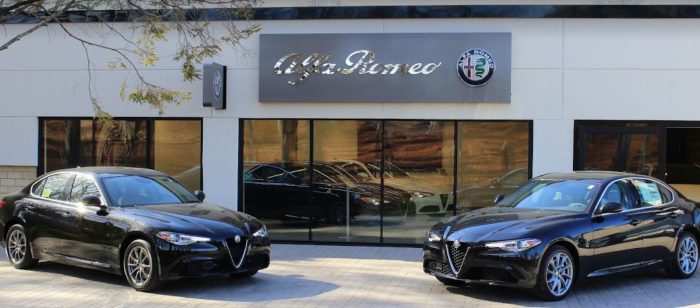
5 Interesting Facts About Alfa Romeo
1. Alfa Romeo wanted to generate capital to create a new car, the Giulietta Berlina, so they put on a lottery and claimed that 200 winners would receive the first 200 examples of this new car. When the car was still not ready, Alfa engineers came up with the Giulietta as a display-only sort of model that rested on the Berlina’s mechanicals to keep people complacent. People ended up liking it so much that Alfa just produced that Giulietta instead of the planned Berlina model.
2. It was not uncommon for Alfa Romeo to feature in their advertisements many of the complex mechanical systems that were in place in their vehicles. To the Milanese company, selling cars to enthusiasts that understood and appreciated the mechanisms underpinning their vehicles was just as necessary as selling a car based on its looks and features.
3. Alfa Romeo was almost constantly experiencing financial hardships or was short on funds before the Fiat acquisition in the late 80s. Owned by Italy’s Institute for Industrial Reconstruction (IRI), the company was often appointed to take on tasks that the government had vested interests in as well. One such interest was tackling unemployment in the south of Italy in the late 60s. The Alfasud was the product of this undertaking.
4. While most manufacturers turn very quickly to high-volume mass market appeal, Alfa Romeo’s first mass-production car didn’t come until 1954 with the Alfa Romeo Giulietta. Before that, Alfa’s engineers were interested in basically just one thing: making fast cars that performed and handled great and could win races. If they could produce their race cars for public consumption after the fact, that was just bonus revenue to make more racecars with.
5. Alfa Romeo was the first manufacturer to use Variable Valve Timing technology in a mass-production vehicle. This revolutionary VVT technology came in the form of a mechanical system in the SPICA fuel-injected 1980 Alfa Romeo Spider 2.0L
Frequently Asked Questions
Who Owns Alfa Romeo?
Alfa Romeo is a member of Fiat Chrysler Automobiles, an automotive industry conglomerate encompassing Fiat, Chrysler, Jeep, Dodge, RAM, Maserati, Abarth, Alfa Romeo, and Lancia.
Are Alfa Romeos Good Cars? Are Alfa Romeos Reliable?
There are seemingly mixed reports regarding the reliability and dependability of Alfa Romeo cars, but the general consensus seems to be that Alfas are highly-engineered machines and most examples from the brand can be counted on just as easily as any foreign or domestic counterparts.
The most interesting part of this question, perhaps, is the fact that most statistical reports point to the unreliability of Alfa Romeo cars while reports from consumers claim the exact opposite. On paper, the brand may not be as reliable as we’d hope but the drivers and owners seem to love their cars despite this uncertainty.
Can I Buy an Alfa Romeo in the U.S.?
Yes! Alfa Romeo imported cars to the United States from 1961 to 1995, and as recently as 2008 began selling vehicles stateside once again with the low-volume 8C coupe, then the 4C in 2014, and then more majorly with the mass-production Giulia in 2016. The Alfa Romeo Stelvio SUV went on sale in the U.S. in 2018.
Are Alfa Romeos Expensive to Maintain?
Just like any other luxury brand, repairs and replacement parts generally come at a premium. It’s also worth noting that any time a manufacturer releases an entirely new vehicle onto the market, which Alfa Romeo is essentially the poster child for, there is bound to be issues. Also taking into account the fact that Alfa Romeo is a sports car manufacturer and prefers its offerings to be on the quicker side, it could be argued that the more aggressive engines are more prone to failure after a moderate amount of miles have been racked up.
The bottom line is this: you’re perfectly fine buying an Alfa Romeo so long as you can afford to buy 1.5 of them.


